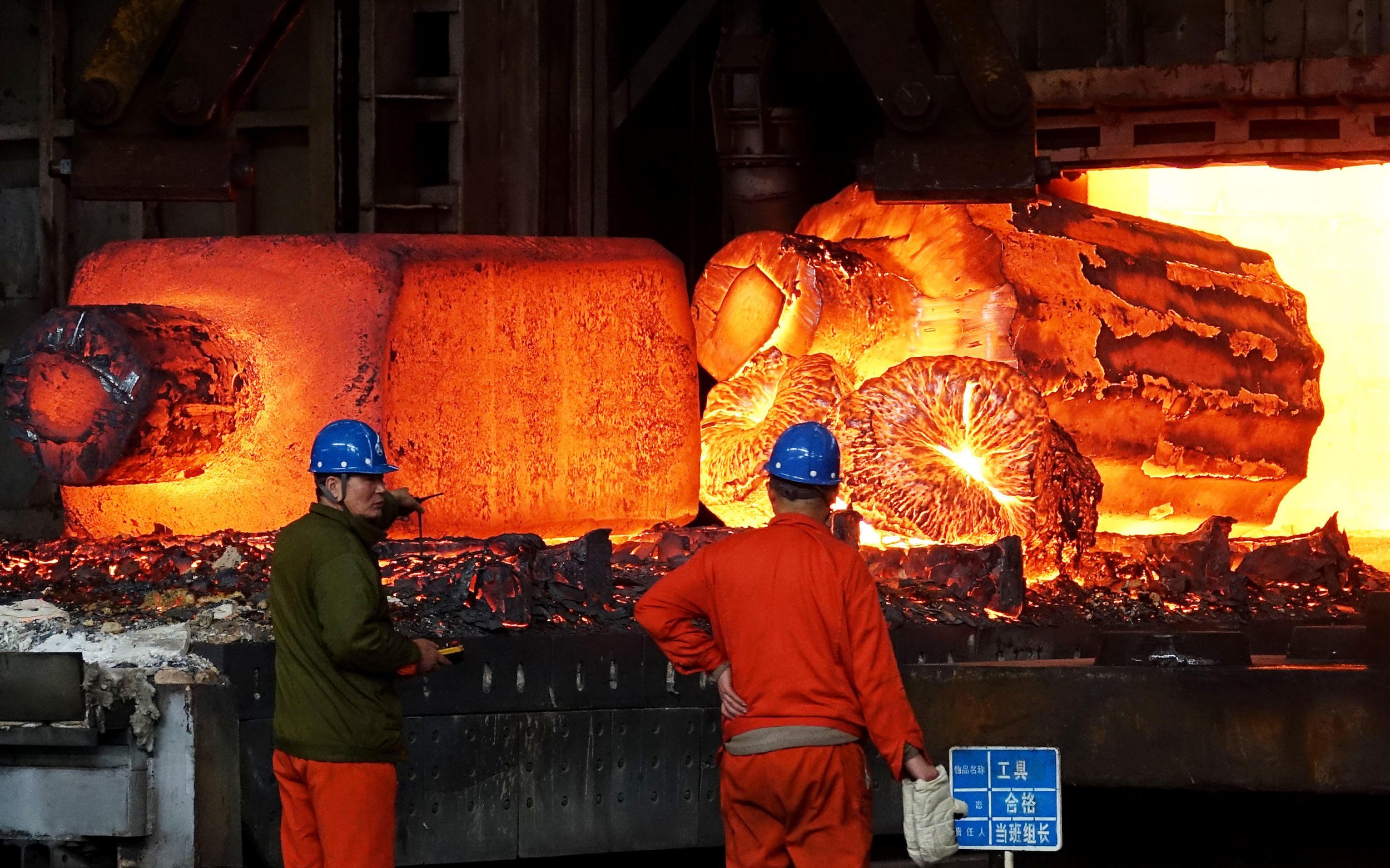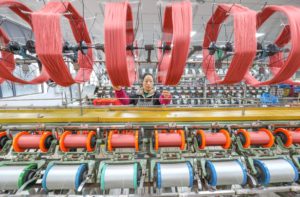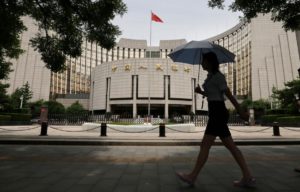The province of Zhejiang has long been a leader in textiles and clothes-making. This brings with it environmental problems, including waste, air and water pollution, and carbon emissions.
Research has found that textiles and footwear production account for 10% of global emissions. Reductions are therefore essential across the industry, but financing them has not always been straightforward.
Only a few years ago, when one textiles firm in the Zhejiang city of Huzhou sought to upgrade its technology and practices to recover wastewater and improve energy efficiency, it found that being part of a carbon-intensive industry meant it couldn’t access green financing. That made it harder to fund the changes.
Things have changed, however, with the arrival of transition finance – an umbrella term for a range of instruments that support “brown”, emissions-intensive businesses to decarbonise their activities.
In January 2022, the Huzhou city government published a catalogue of project types eligible for transition finance, with the textile industry featured. The firm in question successfully applied for a 200 million yuan (US$29 million) “transition finance loan” to reconfigure its workshops, update old equipment and put new management systems in place. The changes are expected to avoid over 600 tonnes of carbon emissions annually, according to the company’s estimates. This is just one example of what is happening in China. In such “brown” sectors, the launch of innovative financial products such as sustainability-linked bonds is helping to cover needs that green finance may overlook. The two approaches are rolling out in parallel. But transition finance in China is just getting started, and classification of suitable projects, funding mechanisms and reporting rules are all needed.
Hitting the spots green finance can’t reach
In 2019, the concept of transition finance began to be promoted by the OECD (Organisation for Economic Cooperation and Development), as a means to provide funding for decarbonisation at various levels in support of the UN Sustainable Development Goals. Soon after, providers were similarly expanding their focus from purely “green” sectors to sustainable development as a whole. In June of that year, for example, French insurance giant AXA stated its intention to launch its first transition finance instruments to support the greening of carbon-intensive industries.
Financial product innovations followed: transition bonds, transition loans and transition funds, as well as sustainability-linked bonds and loans that link financing costs to environmental performance – simply put, if environmental performance isn’t up to scratch, financing costs go up. In September 2019, Enel Finance International, part of the Italian energy multinational Enel Group, issued the world’s first sustainability-linked bonds. Growth has been rapid since then: as of November 2022, the market in transition and sustainability-linked bonds was worth US$201.7 billion.
China has for several years pushed green finance to help to reach its goal of peaking carbon emissions by 2030. It was one of the first countries to set up a systematic green finance policy framework: in 2016, the People’s Bank of China and various ministries published guidance on the creation of a green finance system, setting out this top-level framework. Sectoral specifications soon followed.
But green finance’s coverage is nowhere near enough to meet the country’s climate goals. According to China’s 2022 report on progress towards its nationally determined contribution to the Paris Agreement, the industries supported by green finance in 2021 were worth a total of 8 trillion yuan (US$1.16 trillion) – only 7% of overall GDP. Figures from the National Bureau of Statistics, meanwhile, show that carbon-intensive secondary industries (including manufacturing, electricity generation and heating) were worth 40% of GDP. Those industries will need huge amounts of funding for their transition to low-carbon pathways.
But while green industries can now access green finance, institutions have been cutting “brown” industries off from sources of funding. Some carbon-intensive industries, such as electricity generation, petrochemicals, chemicals, building materials and steel, could transition by shifting to newer technologies and equipment, but they do not meet the requirements for green financing and so these potential emissions cuts go unrealised.
Changing this access to finance will be essential if China is to meet its climate targets. According to a 2021 report from the International Energy Agency (IEA), China’s main sources of carbon emissions are the electricity sector (48%) and industry (36%) – and the potential for emissions reductions here cannot be underestimated. Replacement technologies in heavy industry alone could help China avoid emissions equivalent to almost 15% of the world’s remaining carbon budget compatible with a 50% chance of keeping global warming to 1.5C, the IEA reports.
China’s experiments
China has made some progress on transition finance, with efforts to connect it with green finance and attract more private capital to fund the transition.
The People’s Bank of China started researching transition finance in 2021 and has made initial decisions on the basic principles to be applied. It is considering transition finance standards for four sectors: steelmaking, coal power, buildings and building materials, and agriculture.

Also in 2021, both the Bank of China and the China Construction Bank published statements on their management of transition bonds and on transition bond frameworks. These defined transition bonds and applicable projects, conditions for eligibility and examples. Local governments have also been active – as seen earlier in Huzhou. The city’s 2022 catalogue of transition finance includes eligible projects and its reporting framework covered energy, industry, buildings and agriculture; it can be referred to by market actors to help identify transition projects in the city.
China is also actively engaging in international cooperation on transition finance. In 2022, the People’s Bank of China, as joint chair of the G20 Sustainable Finance Working Group, led the creation of the G20 Transition Finance Framework. This provided high-level principles for member states developing transition finance, covering identification of transitional activities and investments, reporting, financial instruments, policy measures and a just transition, to help them set specific policies and rules.
Some textile, energy and steel firms have started using transition finance instruments. For example, in May 2021 the Liuzhou Steel Group issued 200 million yuan (US$29 million) in sustainability-linked bonds to raise funds for transition initiatives. In a mid-term assessment, a third-party body agreed the firm had met its sustainability requirements.
Also in May 2021, the China Huaneng Group, a state-owned electricity firm, successfully completed a trial issue of sustainability-linked bonds. The company planned to use the proceeds to develop new energy projects, create a green circular industrial chain, increase its proportion of new energy, reduce coal consumption in the provision of power and heat, and also roll out carbon capture and storage to slash emissions from existing generators.
According to our analysis at the International Institute of Green Finance at the Central University of Finance and Economics in Beijing, China had issued 86 billion yuan (US$12.5 billion) in sustainability-linked bonds as of the end of 2022, and 30 billion yuan (US$4.4 billion) in transition bonds.
Standards urgently needed
Although China has carried out some work on policies and market practices, significant challenges remain when it comes to definitions, financial mechanisms and reporting on transition finance.
One big problem with standards for transition finance the world over is that specific transition roadmaps, measures and parameters need to be identified for each industry, alongside classification of the industries themselves. As part of that process, in 2020 the International Capital Market Association (ICMA) published its Climate Transition Finance Handbook, offering principles for reporting and guidance on issuance of transition finance products, but without specifying actual transition activities. Japan used that handbook to produce its own Basic Guidelines on Climate Transition Finance, refining and extending the ICMA’s work, and providing transition roadmaps for carbon-intensive industries. The European Union, meanwhile, absorbed transition finance into its existing sustainable finance framework, setting up the EU Taxonomy and defining “transition activities” as those with major economic impacts and large emissions-reduction potential.
But unlike Japan and the EU, China has not yet specified industrial transition roadmaps, nor is there an authoritative taxonomy of transition activities. This makes it difficult for market actors to identify potential transition opportunities, and so financial and policy instruments are not matched up with suitable projects.
Beware greenwashing
Vigilance over the risk of “greenwashing” – in this instance, when investors or companies get cheap transition finance but fail to use it for green projects – is also needed. The companies receiving funding have more discretion over how transition finance is spent than with green finance, and the associated transition finance policies are still being developed, meaning a lack of oversight. There are risks that transition finance gets used for non-transition activities.
A global analysis by Bloomberg examined 100 sustainability-linked bonds, worth a total of over US$70 billion, and found that most were tied to “weak, irrelevant or even already achieved” climate targets. If green finance can’t drive companies to set more challenging targets, overlooks actual climate performance and fails to track use of funds, then some transition finance will help fund non-transition activities.
In the future, China needs to first make progress on setting standards and, as soon as possible, provide reliable transition roadmaps or taxonomies of transition activities, as well as related environmental performance indicators. This will provide a basis for financial institutions to make decisions on transition finance and help market actors make decisions on investments in transition finance instruments. It will also, to an extent, prevent the risk of greenwashing and ensure that money goes to support low-carbon transitions in carbon-intensive industries.








